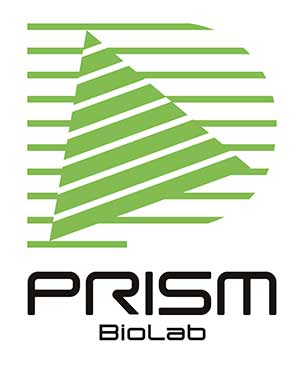Published on: August 21, 2024
Protein function is modulated not only by competitive inhibition but also by allosteric control. The natural ligand binding site has long been targeted because the mechanism of action is clear and the assay development is relatively easy for the directly targeting drugs. Allosteric modulator of a target protein is serendipitously emerged, but now it is one of the well-known approaches for targeting undruggable protein.
Allostery is defined as “energetic coupling between two binding events”, “energetic coupling between a protein structural change and a binding event”, and so on.1) The second definition would appeal to intuitions of scientists in pharmaceutical industry. However, the first definition is more general use of this term and explains its ubiquitous role in physiological and pathological events.
Think of the case where the molecule binding to the outside of the pocket does not change the conformation of the target protein. If the molecule blocks the natural ligand binding from the outside of the pocket, it is an allosteric inhibitor. It plays a role as an allosteric agonist if the ternary complex is formed and the molecule accelerates the natural ligand binding. The first definition explains the biological process of three or more players.
Even though the presence of enormous interest in targeting allostery in drug discovery and development, allosteric binding of a molecule to a target of interest have had lower priority due to the difficulty of the binding site identification and the design of molecules that bind to the region with druggable properties. But nowadays, AI technology with machine learning (ML) is giving opportunity to rational design of modulation by allostery.2, 3), 4), 5) Structure-based drug design (SBDD) is also applicable for allosteric modulators.
Current state of structure-based allosteric drug design (SBADD) is summarized in this review.6) The workflow of drug discovery is basically the same as SBDD.
1. Drug target acquisition and identification
2. Binding site discovery and evaluation
3. Binding modulator design and discovery
The difference is the necessity of allostery assessment. Putative allosteric site’s druggability needs to be evaluated at the second stage, especially when multiple potential allostery are identified. The mode of action (MOA) should be assessed after finding hits even though it depends of the primary assay of choice.
Targeting allostery is becoming easier because site prediction engines and de novo designing models of a series of allosteric modulators are readily available. Popular databases and programs are summarized in the review like ASD7), 8), 9), 10) for allostery, AlloDriver11),12), 13)) for target acquisition, Allosite14), PASSer15)and MDmix16) for binding site identification and further sophistication and Alloscore17) and Allofinder18)for allosteric modulator discovery.
The review refers to demonstrations of SBADD against SIRT6 and STAT3. The authors did not test the in silico result in experiments, but the positive results were reported in detail there.
PepMetics® is a useful platform for the discovery of allosteric modulators. A PepMetics® molecule has a potential to be allosteric modulator because it mimics natural -helix and -turn. The natural signals in our body are controlled by biomolecules like proteins, peptides, nucleic acids and steroidal hormones.
Proteins plays the major role in biologically significant processes. A protein’s function is controlled by its structure and an allosteric perturbation by a small molecule like PepMetics® molecule induces the activity shift of the target.
We would like to have deep scientific discussion with you. If you are thinking of our platform for the hit finding of an allosteric modulator, please feel free to contact us. We would make the maximum contribution to you in terms of drug discovery as well as innovative technology development.
1) https://doi.org/10.1016%2Fj.tibs.2008.05.009
2) https://doi.org/10.3390/ijms24097747
3) https://doi.org/10.1021/acs.jcim.2c01634
4) https://doi.org/10.1016/j.sbi.2024.102774
5) https://doi.org/10.1016/j.tibs.2022.12.001
6) https://doi.org/10.34133/hds.0094
7) https://doi.org/10.1093%2Fnar%2Fgkv902
8) https://doi.org/10.1093%2Fnar%2Fgkz958
9) https://doi.org/10.1093%2Fnar%2Fgkq1022
10) https://doi.org/10.1093%2Fnar%2Fgkt1247
11) https://doi.org/10.1016%2Fj.ajhg.2016.09.020
12) https://doi.org/10.1093%2Fnar%2Fgkz350
13) https://doi.org/10.1093%2Fnar%2Fgkad295
14) https://doi.org/10.1093/bioinformatics/btt399
15) https://doi.org/10.1093%2Fnar%2Fgkad303
16) https://doi.org/10.1021/jm5010418
17) https://doi.org/10.1093/bioinformatics/btw036
18) https://doi.org/10.1093%2Fnar%2Fgky374

